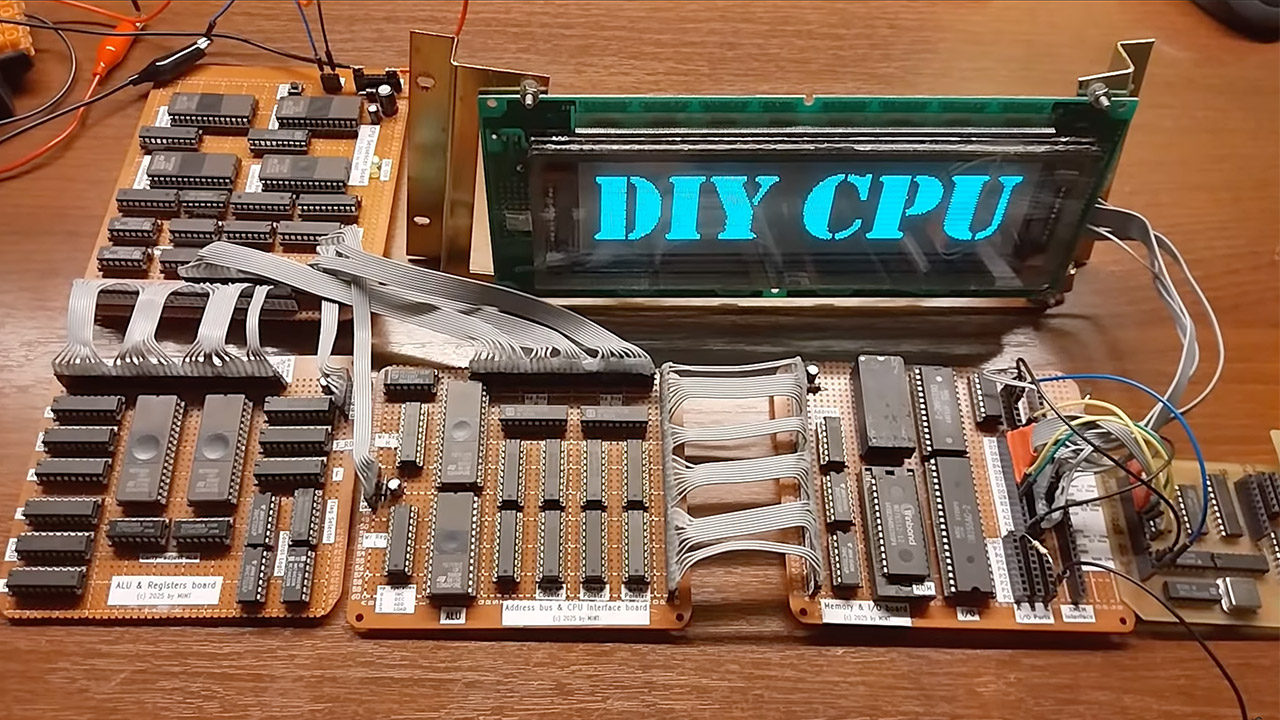
A YouTuber named MINT after hours took on a crazy challenge: building a computer processor from scratch. Not a full PC, but its beating heart—a central processing unit (CPU) dubbed EPROMINT. This 8-bit creation, slapped together on perfboard with chunky dual in-line package chips, is a straight-up throwback to the 1980s when the 6502 and Z80 powered the first personal computers.
MINT after hours set out with a clear mission: to get how computers work at their core. Building a CPU from scratch was the way to go. EPROMINT isn’t showcasing modern muscle—its 8-bit setup can’t touch today’s 64-bit giants. But that’s not the goal. By keeping things simple MINT made the project manageable while nailing the soul of what makes a CPU run.

EPROMINT is a hands-on beast, built on perforated board with old-school components—resistors, capacitors, and EPROM chips wired with the kind of grit that earns hobbyists street cred. These bulky dual in-line packages give it a raw, touchable charm. You can see every solder joint, follow every wire and feel the hustle. It’s the opposite of today’s tiny processors and that’s what makes it so approachable. Drawing from the 6502 and Z80—chips that ran the Apple II and ZX Spectrum—EPROMINT has its own flair, with a more flexible instruction set and a beefed up arithmetic logic unit (ALU) that crunches numbers with a bit more swagger than its retro idols.

The real showstopper? When MINT hooked EPROMINT to a basic display this DIY CPU started playing videos. Not 4K streams but legit, watchable footage with solid frame rates. The monochrome, low-res clips scream early computer graphics and that’s the magic. Seeing a grainy video come to life on a screen powered by a homemade processor is a tech miracle.

Check out the GitHub page and you’ll see EPROMINT’s innards. It uses EPROM chips—electrically programmable read-only memory—to store the instructions that control the CPU’s behavior. These chips, along with a carefully wired circuit, handle basic math and the tricky job of rendering video frames.
The ALU, the math-whiz part of the CPU, is the star of the show, outmuscling many 1980s processors to handle the video data. The GitHub repo also has the details on the instruction set which is flexible enough to do way more than MINT originally planned.
[Source]